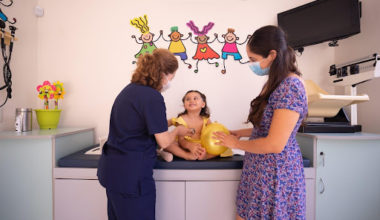Introduction
Dual diagnosis rehab centers specialize in treating individuals who struggle with both substance use disorders and mental health issues. Given the complexity of dual diagnosis, these facilities must implement rigorous safety measures and protocols to ensure the well-being and effective treatment of their clients. This article will delve into the key safety measures and protocols integral to dual diagnosis rehab.
Understanding Dual Diagnosis Treatment
Dual diagnosis treatment requires an integrated approach that addresses both mental health and substance abuse simultaneously. This complexity necessitates a higher level of care and safety measures to manage the unique challenges posed by dual diagnosis.
Essential Safety Measures in Dual Diagnosis Rehab
Comprehensive Assessment and Individualized Treatment Plans
Upon admission, a thorough assessment is crucial to understand each client’s specific needs. This includes evaluating mental health status, substance use history, and any potential risk factors. Based on this assessment, an individualized treatment plan is developed, ensuring that the care provided is tailored to each client’s unique situation.
Qualified and Trained Staff
The presence of highly trained and qualified staff, including mental health professionals, addiction specialists, and medical personnel, is vital. These professionals are equipped to handle the complexities of dual diagnosis, providing the necessary medical and therapeutic support.
For an example of a facility that prioritizes staff expertise, especially in gender-specific treatment, one can refer to a women’s rehab center, which ensures the presence of staff adept in addressing the unique challenges faced by women in recovery.
Safe Medication Management
Many individuals with a dual diagnosis require medication as part of their treatment. Safe medication management protocols are essential to prevent misuse and ensure that medications are administered effectively, addressing both mental health and addiction issues.
Crisis Intervention Protocols
Due to the heightened risk of crises in dual diagnosis clients, such as severe mental health episodes or relapse, rehab centers must have robust crisis intervention protocols. These include rapid response teams, access to emergency medical care, and procedures for managing acute psychiatric episodes.
Creating a Safe and Supportive Environment
Secure Facilities
Physical safety is paramount in dual diagnosis rehab centers. Facilities should be secure to prevent unauthorized access and ensure clients’ safety, especially for those at risk of self-harm or elopement.
Regular Monitoring and Supervision
Continuous monitoring and supervision are necessary to ensure clients’ safety, particularly for those who might be prone to self-harm or experiencing severe withdrawal symptoms. This includes regular check-ins, 24/7 monitoring in certain cases, and constant accessibility of staff for any emergencies.
Confidentiality and Privacy
Maintaining confidentiality and privacy is not just a legal requirement but also essential for creating a safe and trusting environment. This includes secure handling of medical records, private therapy sessions, and ensuring a confidential space for clients to share and heal.
Enhancing Safety Through Education and Empowerment
Educating clients about their dual diagnosis, the importance of medication compliance, and coping strategies for mental health symptoms empowers them to take an active role in their recovery. This education also extends to recognizing potential triggers and developing relapse prevention strategies.
Continuity of Care Post-Discharge
Safety measures and protocols should extend beyond the inpatient stay. Continuity of care, including follow-up appointments, access to outpatient services, and support groups, is crucial for maintaining safety and preventing relapse post-discharge.
Conclusion
Safety measures and protocols are the backbone of effective dual diagnosis treatment. These measures ensure not only the physical safety of clients but also provide a supportive environment conducive to recovery. For those seeking dual diagnosis treatment, it is essential to choose a rehab center that adheres to these rigorous safety standards.
For further information on safety protocols in addiction treatment, resources such as SAMHSA and National Institute on Drug Abuse (NIDA) provide valuable insights and guidelines. Remember, the right rehab center can make a significant difference in the journey towards recovery and health.











